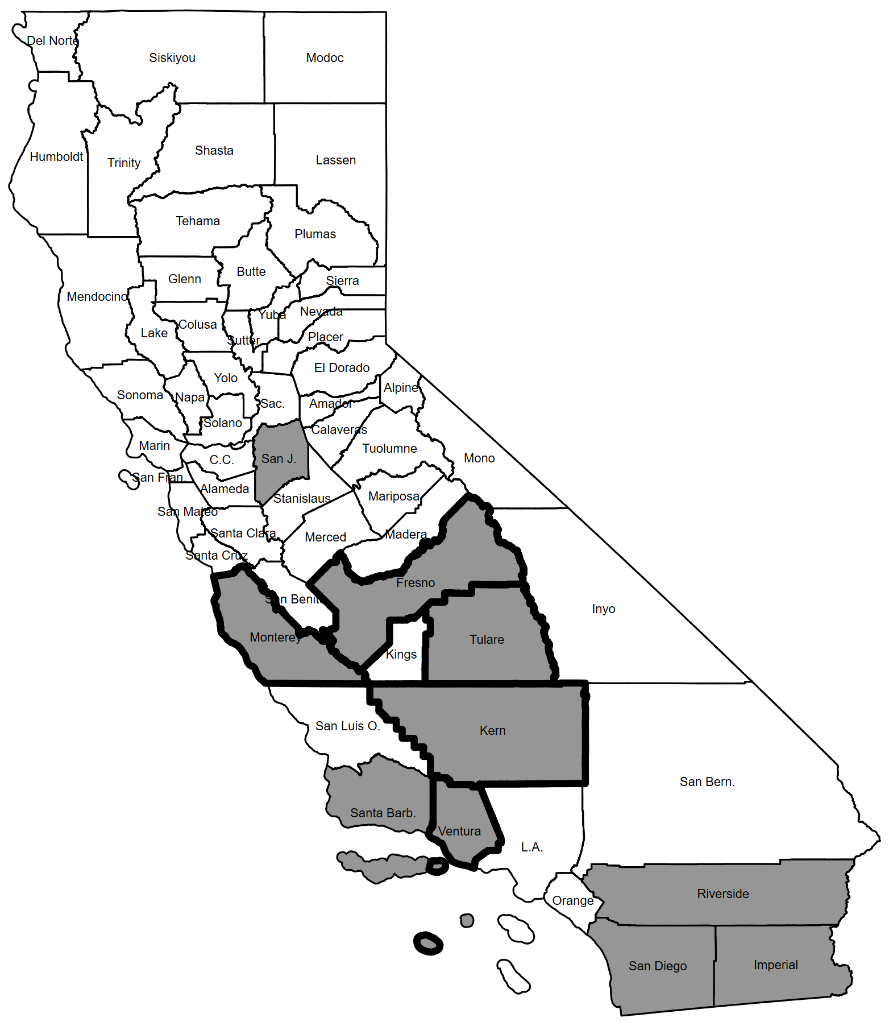Farm Labor Supply and Fruit and Vegetable Production
AAEA members release new research in AJAE
 For the first time in recent history, the number of Mexican immigrants residing in the United States (U.S.) has started to drop. While there is no single reason for this sudden change, one thing is certain: it has impacted producers who have traditionally relied upon low-skilled immigrant labor. For over a decade, U.S. farmers have reported labor shortages that have limited their ability to harvest labor-intensive crops such as fruits and vegetables. While economic research has uncovered evidence of a negative trend in the supply of farm labor and shortages of harvest workers in California, few studies so far have investigated how these types of labor market shocks ultimately affect the production of labor-intensive crops. In a new article to be published in the American Journal of Agricultural Economics, Zachariah Rutledge and Pierre Mérel provide new insights into the discussion about farm labor scarcity by quantifying the extent to which changes in the supply of farm labor have impacted the production of hand-harvested fruits and vegetables in the state of California.
For the first time in recent history, the number of Mexican immigrants residing in the United States (U.S.) has started to drop. While there is no single reason for this sudden change, one thing is certain: it has impacted producers who have traditionally relied upon low-skilled immigrant labor. For over a decade, U.S. farmers have reported labor shortages that have limited their ability to harvest labor-intensive crops such as fruits and vegetables. While economic research has uncovered evidence of a negative trend in the supply of farm labor and shortages of harvest workers in California, few studies so far have investigated how these types of labor market shocks ultimately affect the production of labor-intensive crops. In a new article to be published in the American Journal of Agricultural Economics, Zachariah Rutledge and Pierre Mérel provide new insights into the discussion about farm labor scarcity by quantifying the extent to which changes in the supply of farm labor have impacted the production of hand-harvested fruits and vegetables in the state of California.
Their paper, titled “Farm Labor Supply and Fruit and Vegetable Production," correlates detailed agricultural production data at the county level to actual measures of farmworker employment over a 30 year period, using a statistical approach that accounts for potentially confounding effects such as long-term trends in counties' agricultural acreage or weather shocks. Their analysis nicely complements previous studies that have tended to rely upon few data points or expert opinion. Their main results indicate that a ten percent decrease in California's farm labor supply (in terms of the number of workers) causes at most a 4.2% reduction in hand-harvested crop production in the top 10 fruit and vegetable producing counties (see Figure to the right), which produce 86% of the value of the state's labor-intensive fruits and vegetables (excluding crops such as wine grapes that can be mechanically harvested). The production effects are channeled primarily through a reduction in harvested acreage, although they also uncover some effects on yield, plausibly indicative of selective harvesting.
Their estimated impacts are economically meaningful, suggesting that some farmers will suffer significant losses, but they also indicate that the declining farm labor supply will likely not devastate the aggregate production of California's fruits and vegetables over the next decade. Their analysis of the top five producing counties, which produce about 67% of the value of all labor-intensive crops in the state, reveals that if the farm labor supply continues to decline at a rate of one percent per year (as recent estimates suggest), as much as 60,000 tons of hand-harvested fruits and vegetables could be lost each year. Their results also suggest that this declining labor supply could create as much as $3.7 billion in lost crop value in those counties, or 2.9% of the total value of the state's hand-harvested fruit and vegetable production, over the course of a decade. While this trend may lead to increased reliance upon imports from countries with a comparative advantage in labor-intensive crop production, which itself is a desirable result of free markets and trade, American consumers can be expected to bear new social costs due notably to higher food prices and possibly reduced quality and convenience in terms of shelf life and seasonal availability.
If you are interested in setting up an interview, please contact Allison Ware in the AAEA Business Office.
ABOUT AAEA: Established in 1910, the Agricultural & Applied Economics Association (AAEA) is the leading professional association for agricultural and applied economists, with 2,500 members in more than 60 countries. Members of the AAEA work in academic or government institutions as well as in industry and not-for-profit organizations, and engage in a variety of research, teaching, and outreach activities in the areas of agriculture, the environment, food, health, and international development. The AAEA publishes three journals, the Journal of the Agricultural and Applied Economics Association (an open access journal), the American Journal of Agricultural Economics and Applied Economic Perspectives & Policy, as well as the online magazine Choices and the online open access publication series Applied Economics Teaching Resources. To learn more, visit www.aaea.org.
Contact: Allison Ware
Senior Communications Manager
(414) 918-3190
Email: aware@aaea.org









